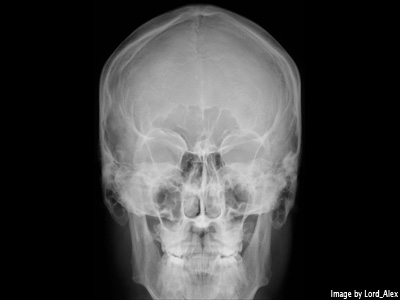Healthcare professionals: a key element of sustainable app development
Posted on 14 October 2013
Healthcare professionals: a key element of sustainable app development
 By Eve Macharia, Specialist Registrar and clinical researcher in Paediatric Surgery, Institute of Child Health.
By Eve Macharia, Specialist Registrar and clinical researcher in Paediatric Surgery, Institute of Child Health.
Apps are a rapidly evolving and expanding example of software-as-a-service. In the past ten years, there has been an explosion in the number of health-related apps available to the consumer. Currently, the NHS apps library hosts 81 apps - these must pass the NHS review approval process to be deemed safe. Even as a healthcare professional and consumer of health on the NHS, I am unable to suggest a single app that has gained widespread acceptance and usage. Despite the virtual monopoly that the NHS has on provision healthcare, there seems to be disconnect between healthcare app development and consumers.
To make sustainable apps that have both an audience and a reasonable lifetime, developers need to engage healthcare professionals in the app development, testing and promotion. The NHS offers two essential resources that can help: healthcare consumers motivated to improve their health or monitor their condition, and healthcare professionals able to define the tool, direct the user to the app and motivate its use. The key to capturing these two resources is involving a healthcare professional in app development!
A worrying disconnect
A chasm separates app developers and healthcare professionals. Healthcare professionals are rarely involved in the development of leading medical apps. Burke et al surveyed the developers of the top ten medical apps in 2012 and found that only one developer had involved a healthcare professional (Burke KB, 2012). Rodrigues et al (Rodrigues MA, 2013 ) reviewed 321 radiology related applications and found that only 36% reported the involvement of a medical professional in app development.
Healthcare app consumers increasingly demanding authenticity. Dennison et al (Dennison L, 2012) found that the involvement of a medical professional in app development was a factor when consumers make decisions about the quality of an app. There are also signs of a backlash against healthcare app developers from both health professionals and regulatory bodies. Academic journals now match articles extolling the virtues of apps with articles questioning their reliability (Ferriero G, 2013). A recent review of smartphone apps for sleep screening apps is a case in point Behar et al (Behar, Roebuck, Domingos, Gederi, & Clifford, 2013) noted a proliferation in sleep screening apps. However, few apps utilised validated measurement tools. Variability in results depending on the platform, the type of patient, the use of an in-phone or remote sensor and the user’s environment were noted. The UK National Health Service (NHS), the US Food and Drug Administration (FDA) and the European Medicines Agency (EMA) have produced regulatory frameworks that introduce rigour, perhaps even stringency, in the development and application of apps targeted at consumers.
Making the connection
In our experience, developing the TARDIS:GOR app, we identified several factors that are key to connecting the app development and healthcare ecosystems. Firstly, developers and medics must establish common ground. As both worlds are steeped in jargon and three-letter acronyms, finding common ground can be a challenge.
After a few months working together, it became clear that my developer and I were speaking in synonyms. My case report form and clinical questionnaires easily translated into his app views. What he called an object with attributes was what I called a category with variables. To make this connection, both the app developer and the healthcare specialist need to immerse themselves in each other’s environment.
The app developer also needs to understand that the key opinion leader is not always the president of the association. Older practitioners are more likely to hold influential positions, but less likely to be rapid adopters of technology. Younger respondents are also less likely to hold the purse strings. In a survey of 182 colorectoral surgeons working in the UK, Ireland and Europe, Smart (NJ, 2012 ) identified a high proportion of smartphone ownership (83.5% ). Respondents in the 21-50 year age group were significantly more likely to own a smartphone and incorporate it into clinical practice respondents than in the 51-70 year age group ( 88.8%vs 72.7% respectively P = 0.02). For a healthcare app to be sustainable, it needs to be viable in both the worlds of technology and healthcare.
Top tips on healthcare app development
Eve is the project lead on the TARDIS team, where she coordinated the development of an app for the study of gastro-esophageal reflux (GOR) in children. If you're interested in developing healthcare apps, you can read Eve's top tips on developing apps for the healthcare sector.
